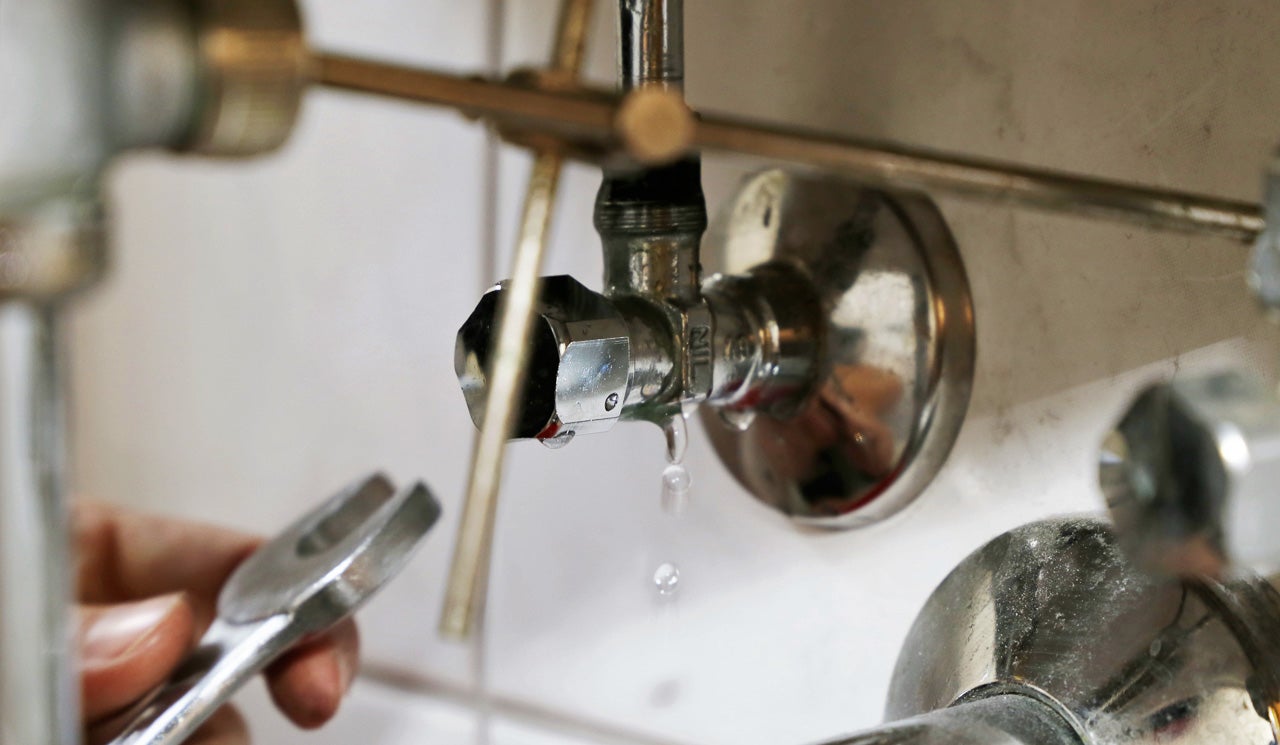This great article which follows involving Hacks to detect leaks is fairly entertaining. Try it and draw your own personal conclusions.

Early detection of dripping water lines can alleviate a potential catastrophe. Some little water leaks may not be noticeable.
1. Examine the Water Meter
Every home has a water meter. Examining it is a surefire way that assists you find leakages. For beginners, switch off all the water sources. Guarantee nobody will purge, utilize the tap, shower, run the cleaning maker or dish washer. From there, most likely to the meter and watch if it will change. Since no one is using it, there need to be no activities. If it relocates, that indicates a fast-moving leakage. If you identify no adjustments, wait an hour or two and also inspect back again. This suggests you might have a sluggish leakage that could even be underground.
2. Check Water Usage
If you detect abrupt adjustments, in spite of your usage being the exact same, it means that you have leakages in your plumbing system. An abrupt spike in your expense shows a fast-moving leakage.
A stable rise every month, also with the very same behaviors, shows you have a slow-moving leakage that's additionally gradually intensifying. Call a plumber to extensively examine your home, particularly if you really feel a cozy location on your flooring with piping beneath.
3. Do a Food Coloring Test
When it comes to water intake, 30% comes from commodes. Examination to see if they are running correctly. Decline flecks of food color in the tank as well as wait 10 mins. If the shade somehow infiltrates your dish during that time without flushing, there's a leak in between the storage tank as well as dish.
4. Asses Exterior Lines
Do not neglect to check your outdoor water lines also. Must water seep out of the connection, you have a loose rubber gasket. One tiny leakage can squander loads of water and also surge your water costs.
5. Examine as well as Examine the Scenario
House owners must make it a routine to examine under the sink counters as well as even inside cabinets for any kind of bad odor or mold growth. These 2 red flags suggest a leak so punctual interest is required. Doing regular assessments, even bi-annually, can conserve you from a major trouble.
A lot more importantly, if you recognize your home is currently old, keep a watchful eye on your heaters, pipes, pipes etc. Check for stainings and also damaging as the majority of home appliances and pipelines have a life span. They will also naturally wear away as a result of deterioration. If you presume leaking water lines in your plumbing system, do not wait for it to escalate. Call a specialist plumber today so you don't wind up with an awful mess in your home.
Early detection of dripping water lines can mitigate a possible calamity. Some small water leaks might not be visible. Checking it is a surefire means that assists you uncover leakages. One tiny leak can lose loads of water as well as surge your water costs.
If you believe dripping water lines in your plumbing system, don't wait for it to escalate.
How to Know If Your Home Has a Hidden Leak
Water Meter Reveals Inexplicable Water Usage
If you’d like to test whether or not there’s a leak somewhere in your home, you can do this using your water meter. Here is how to conduct the test:
Don’t use any water in your home for at least 30 minutes; this also means not turning on faucets or water-using appliances.
Go outside, and check your water meter for activity.
If your water meter shows that there was activity, even though no one was using any water, this proves that there is a leak in your home.
Visible Mold or Mildew Growth
Leaks behind walls create moist, dark environments that allow mold and mildew to grow and thrive. Eventually, you might see mold growth forming on the wall closest to a hidden leak.
If mold is growing in an area that receives a high amount of moisture, such as a bathroom, it may simply be an indication that better ventilation is needed. However, if you see mold growth on a wall or the ceiling in an area where you would not expect, you probably have a hidden leak.
Musty, Mildew Odor
Sometimes you might not be able to see the mold or mildew that is growing as a result of a leak. However, the smell can give the problem away just as easily. If you catch a whiff of something musty, there’s a good chance that old water is collecting somewhere in your home that you can’t see.
Stained/Warped Walls, Ceilings, or Floors
When your home soaks up water, a variety of red flags can become visible, including ceiling stains, bubbling drywall, warped walls, and sagging floors. While these issues can be caused by excess humidity, they can also be signs that a pipe or plumbing connection has started leaking behind your walls.
Inexplicably High Water Bill
After a while, you get a general sense for what your water bill should be. If you own a pool or sprinkler system, your bill will tend to be higher during summer. However, if you receive a water bill that seems especially high, and you can’t figure out what caused it, then you may have a hidden leak somewhere that’s increasing your bill.
https://www.plumbingjoint.com/blog/2019/july/how-to-know-if-your-home-has-a-hidden-leak/

I came across that piece of writing on Finding hidden leaks when doing a search on the web. Appreciated our review? Please share it. Let other people locate it. We thank you for reading our article about Top leak detection hacks.
Comments on “How to Locate as well as Repair Work Water Leaks-- A Comprehensive Overview”